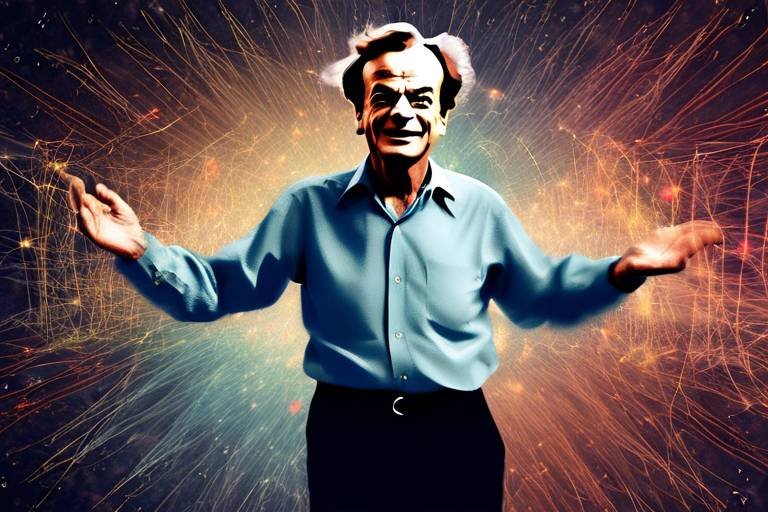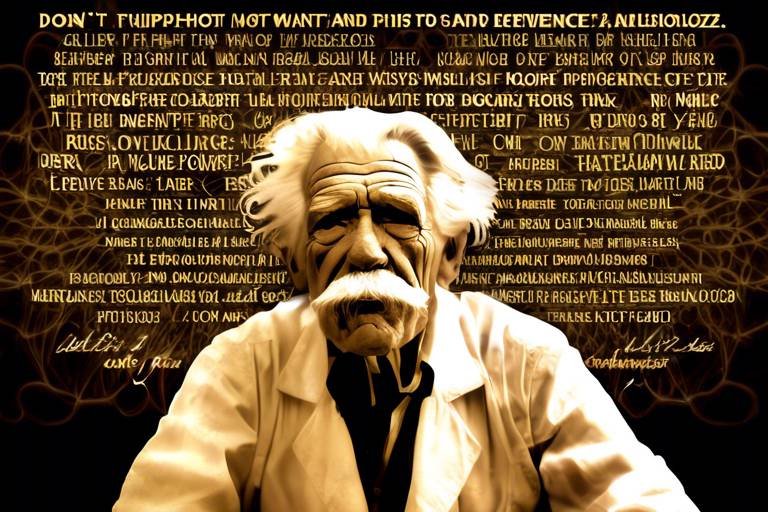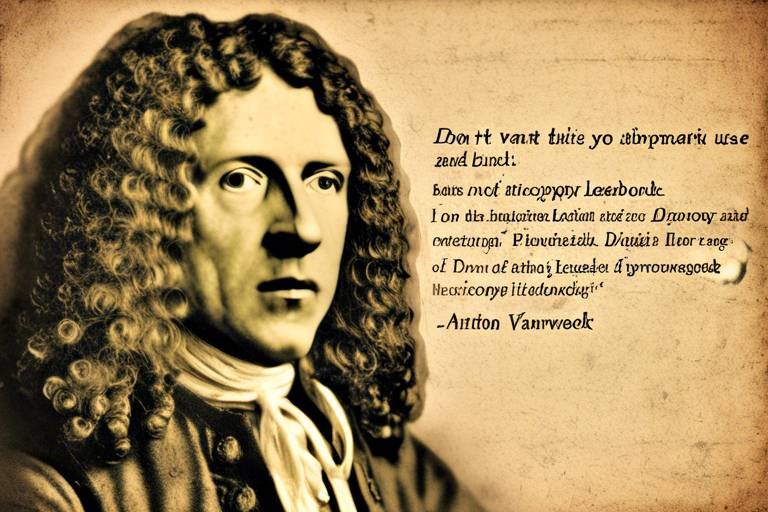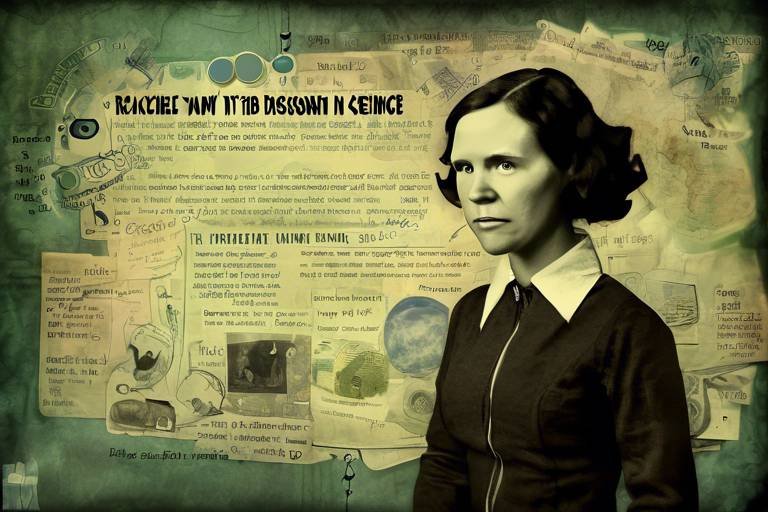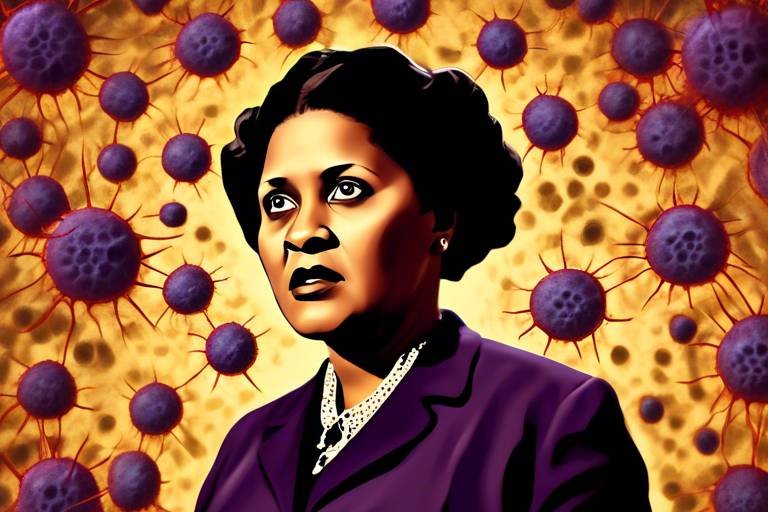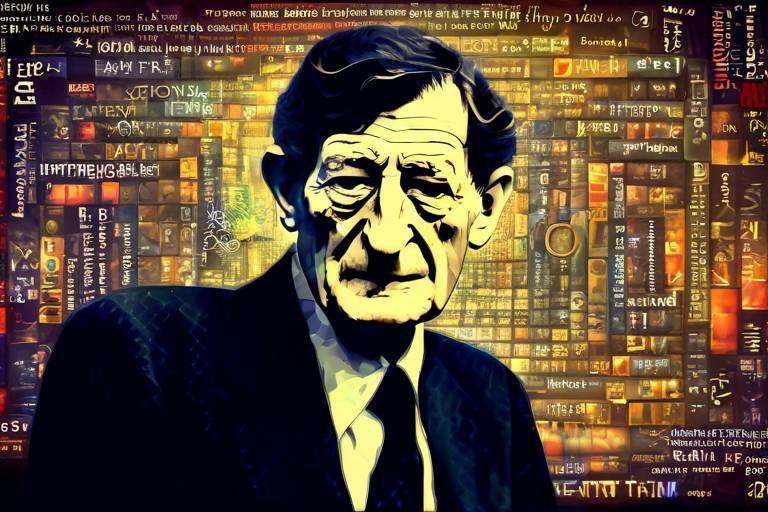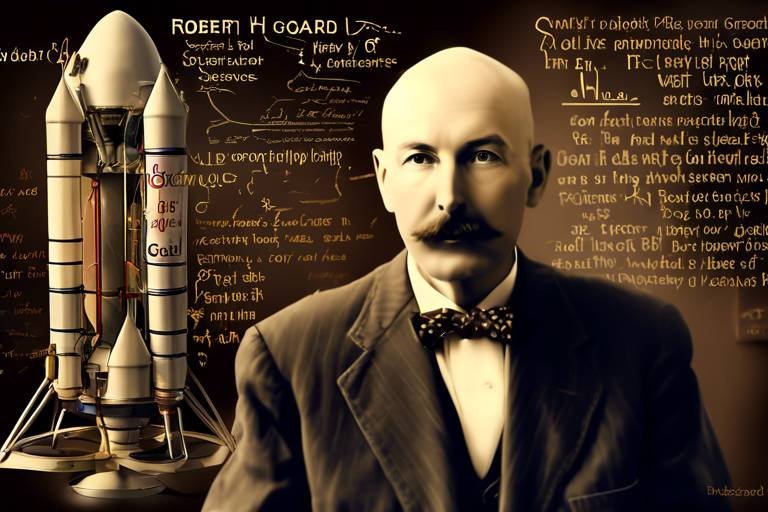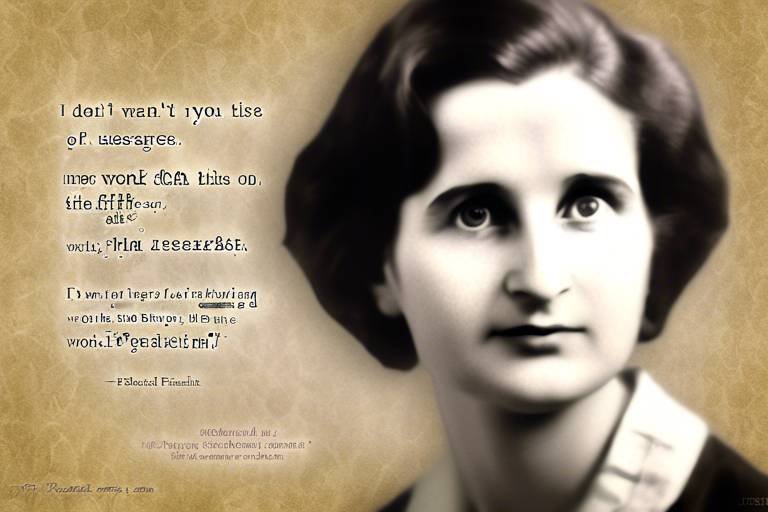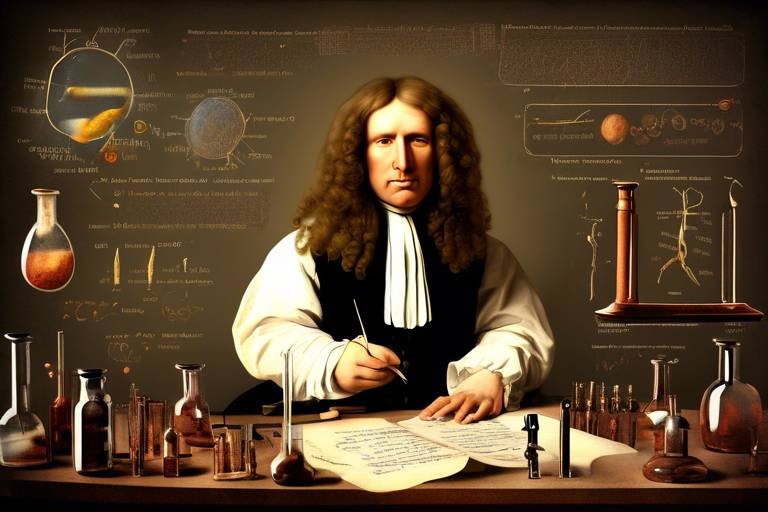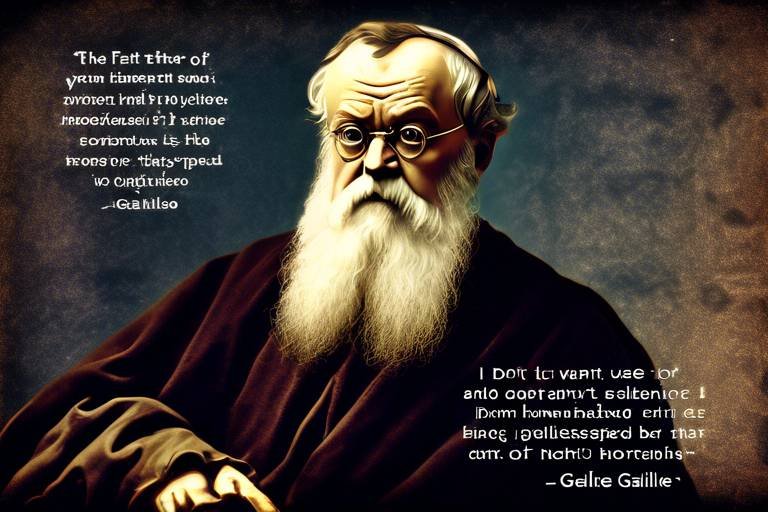The Life of Carl Jung and His Influence on Psychology
When we think about the evolution of psychology, one name stands out: Carl Jung. His journey through the intricate landscape of the human mind has not only shaped modern psychology but also opened doors to deeper understanding of our collective experiences. Born in 1875 in Switzerland, Jung's life was a tapestry woven with threads of curiosity, exploration, and profound insight. His early experiences, from a childhood steeped in the mysteries of nature to a formal education that sparked his interest in psychology, laid the groundwork for his groundbreaking theories.
Jung's work transcends traditional boundaries, inviting us to explore the depths of the unconscious and the shared symbols that connect us all. His concepts like the collective unconscious and archetypes have become foundational in understanding not just individual psychology but also cultural phenomena. This article delves into the life of Carl Jung, examining his foundational theories and the indelible mark he left on the field of psychology. Buckle up, because we're about to embark on a fascinating journey through the mind of one of psychology's most influential figures!
Carl Jung's formative years were anything but ordinary. Growing up in a small village, he was deeply influenced by the natural world around him. His father, a pastor, and his mother, who had a keen interest in mysticism, provided a unique blend of rationality and spirituality that would later permeate his work. Jung was a curious child, often lost in thought, pondering the mysteries of life and the human experience. This inherent curiosity led him to pursue a degree in medicine, where he eventually specialized in psychiatry.
During his studies, Jung became fascinated by the emerging field of psychology, particularly the works of Sigmund Freud. Their initial collaboration sparked a friendship and intellectual partnership that would profoundly influence both their theories. However, Jung's quest for understanding went beyond Freud's focus on sexuality and the unconscious. He sought to explore the spiritual and symbolic dimensions of the psyche, setting the stage for his own revolutionary ideas.
In the early 20th century, Jung established his own school of thought known as analytical psychology. This was a bold move, as it diverged significantly from Freud's psychoanalytic approach. While Freud emphasized the role of repressed desires and conflicts, Jung introduced concepts that broadened the scope of psychological inquiry. He believed that the human psyche is not only shaped by personal experiences but also by a shared reservoir of memories and symbols that transcend individual lives.
One of Jung's most significant contributions to psychology is the idea of the collective unconscious. But what exactly does that mean? Simply put, Jung posited that beneath our individual unconscious lies a deeper layer shared by all humanity. This collective unconscious houses universal memories, instincts, and archetypes that influence our thoughts, behaviors, and cultural expressions. It's like a vast library of human experience, where every story, myth, and symbol is stored, waiting to be accessed.
Within the collective unconscious, Jung identified archetypes—universal symbols and themes that resonate across cultures and time. These archetypes, such as the Hero, the Mother, and the Shadow, shape our narratives and influence our behavior. For instance, the Hero archetype embodies courage and the quest for self-discovery, while the Shadow represents the darker aspects of our personality that we often try to suppress. Understanding these archetypes can provide profound insights into our own lives and the stories we tell.
Dreams, for Jung, were not just random images but powerful messages from the unconscious. He developed a method of dream analysis that focused on interpreting the symbols and themes present in dreams. Jung believed that by exploring these dreams, individuals could uncover hidden aspects of themselves and gain a deeper understanding of their psyche. This approach to dream interpretation emphasized the personal significance of dreams, encouraging individuals to engage with their own unconscious narratives.
The relationship between Jung and Freud was complex and marked by both collaboration and conflict. Initially, they shared a deep intellectual bond, but as their ideas evolved, so did their differences. Jung's emphasis on spirituality and the collective unconscious clashed with Freud's focus on sexuality and the personal unconscious. This rift ultimately led to a split, but it was a necessary evolution that allowed both men to develop their theories further. Their dynamic serves as a reminder of how intellectual partnerships can shape and sometimes fracture the landscape of knowledge.
Today, the impact of Carl Jung's work is evident in various fields of psychology and beyond. His theories continue to influence contemporary therapeutic practices, particularly in the realm of Jungian therapy. This approach emphasizes personal growth, self-discovery, and the integration of the unconscious into conscious awareness. Therapists today utilize Jungian principles to help individuals navigate their inner landscapes and foster a deeper understanding of themselves.
Jungian therapy remains relevant in our fast-paced world, focusing on the importance of self-reflection and the journey toward individuation—becoming the person we are meant to be. Therapists employ various techniques, including dream analysis, active imagination, and exploring personal and cultural myths. This holistic approach encourages clients to embrace their complexities and find meaning in their experiences.
Beyond psychology, Jung's ideas have permeated literature, art, and spirituality. His concepts resonate in various disciplines, inspiring writers, artists, and spiritual seekers to explore the depths of the human experience. From the works of authors like Joseph Campbell to the visual narratives of modern artists, Jung's influence is a testament to the power of his ideas in shaping our understanding of culture and the human condition.
- What is the collective unconscious? The collective unconscious is a concept introduced by Jung that refers to the shared memories and symbols that are common to all humanity.
- How did Jung's theories differ from Freud's? While Freud focused on sexuality and the personal unconscious, Jung emphasized spirituality, the collective unconscious, and archetypes.
- What is Jungian therapy? Jungian therapy is a form of psychotherapy that focuses on personal growth, self-discovery, and the integration of the unconscious into conscious awareness.

Early Life and Education
Carl Jung was born on July 26, 1875, in Kesswil, Switzerland, a quaint town nestled by the shores of Lake Constance. His early life was steeped in a rich tapestry of cultural and intellectual influences that would later shape his groundbreaking theories in psychology. Growing up in a family that valued education, Jung was exposed to various fields of knowledge, from philosophy to religion, which sparked his curiosity and laid the groundwork for his future explorations.
Jung's father, a Protestant minister, and his mother, who had a keen interest in mysticism, played pivotal roles in his upbringing. This duality of rationality and spirituality created a fertile ground for Jung's thoughts on the human psyche. As a child, he often felt isolated and struggled with feelings of being different, which would later manifest in his understanding of the collective unconscious and personal shadows. His early experiences of solitude and introspection were not just phases; they were critical in developing his profound insights into the human condition.
After completing his primary education, Jung pursued his studies at the University of Basel, where he initially enrolled in the field of medicine. However, his fascination with the mind led him to specialize in psychiatry. During his university years, he was particularly influenced by the works of philosophers such as Friedrich Nietzsche and Arthur Schopenhauer, whose ideas about the unconscious mind and human motivation resonated deeply with him.
In 1900, Jung graduated with a medical degree, but his journey was just beginning. He took a position at the Burghölzli Psychiatric Hospital in Zurich, where he worked under the guidance of the renowned psychiatrist Eugen Bleuler. It was here that Jung began to develop his unique approach to psychology, blending empirical observation with philosophical inquiry. His experiences at the hospital, coupled with his interest in the occult and mythology, propelled him to explore the depths of the human psyche beyond the confines of conventional psychiatry.
Throughout his education, Jung was not just a passive learner; he actively sought out experiences that would enrich his understanding. He traveled extensively, immersing himself in different cultures and their psychological frameworks. This exploration was not merely academic; it was a quest for knowledge that would inform his later theories on the collective unconscious and archetypes. Jung's educational journey was a mosaic of experiences that combined rigorous academic study with personal exploration, ultimately leading him to become one of the most influential figures in psychology.
In summary, Jung's early life and education were marked by a blend of intellectual curiosity, personal struggle, and cultural exploration. These foundational experiences shaped his understanding of the human psyche and set the stage for his later contributions to psychology. His journey from a solitary child in Switzerland to a pioneering psychologist is a testament to the profound impact that early experiences can have on one's life and work.

Founding Analytical Psychology
In the early 20th century, Carl Jung embarked on a profound journey that would lead him to establish analytical psychology, a field that diverged significantly from the prevailing Freudian theories. Jung's approach was revolutionary, as he sought to understand the depths of the human psyche beyond mere sexual motivations, which Freud emphasized. Instead, Jung introduced a more expansive view of the unconscious, one that included not just personal experiences but also collective elements shared among humanity.
At the heart of Jung's analytical psychology is the idea that the psyche is composed of multiple layers, with the personal unconscious and the collective unconscious being two of the most prominent. The personal unconscious holds our individual memories and experiences, while the collective unconscious contains the shared memories and archetypes that transcend individual experiences. This concept was a game-changer, as it suggested that our thoughts, feelings, and behaviors are influenced not only by our personal history but also by a broader, shared human experience.
Jung also emphasized the importance of individuation, a process through which a person integrates different aspects of the self to achieve a harmonious whole. He believed that this journey toward self-discovery was essential for psychological health and well-being. In Jung's view, understanding oneself is akin to traversing a labyrinth; it requires courage and introspection to navigate the twists and turns of our inner world.
To illustrate the key components of analytical psychology, consider the following table:
| Key Concepts | Description |
|---|---|
| Personal Unconscious | The part of the unconscious that contains an individual's unique experiences and memories. |
| Collective Unconscious | A deeper layer of the unconscious that houses shared memories and archetypes common to all humanity. |
| Archetypes | Universal symbols and themes that shape human experiences and narratives. |
| Individuation | The process of integrating various aspects of the self to achieve personal wholeness. |
Jung's departure from Freud's theories was not merely academic; it was deeply personal as well. Their collaboration began with a shared interest in the unconscious, but as Jung's ideas evolved, they began to diverge. Jung believed that Freud's focus on sexuality as the primary driving force behind human behavior was too limiting. Instead, he posited that spirituality, mythology, and cultural influences play a significant role in shaping our psyche. This broader perspective allowed Jung to explore the rich tapestry of human experience, leading to a more holistic understanding of mental health.
In summary, Jung's founding of analytical psychology marked a pivotal moment in the field of psychology. By expanding the understanding of the unconscious and emphasizing the importance of personal growth, Jung laid the groundwork for future psychological exploration. His ideas continue to resonate today, influencing not only therapy practices but also our understanding of culture, art, and spirituality.

The Collective Unconscious
When we think about the mind, it’s easy to imagine it as a solitary entity, a unique landscape shaped by our personal experiences. However, Carl Jung introduced a groundbreaking concept that expanded this view: the collective unconscious. This idea suggests that beneath our individual consciousness lies a deeper layer of shared memories and symbols that connect all humans. It’s like an invisible thread weaving through the fabric of humanity, linking our thoughts, dreams, and behaviors across cultures and generations.
So, what exactly is the collective unconscious? Jung described it as a reservoir of our experiences as a species, a storehouse of knowledge and archetypes that transcend individual lives. Imagine it as a vast ocean, where each wave represents the shared wisdom of countless souls. This ocean is not just a backdrop; it actively influences our thoughts and actions. Jung believed that this collective layer of the psyche is responsible for the universal themes we see in myths, legends, and dreams across different cultures. For instance, the hero's journey, a narrative structure found in stories worldwide, emerges from this collective well of archetypal images.
One of the most fascinating aspects of the collective unconscious is its archetypes. These are innate, universal symbols and patterns that shape our understanding of the world. Think of archetypes as the building blocks of our psyche, the characters and motifs that appear in our dreams and stories. Some common archetypes include:
- The Hero: Represents courage and the quest for self-discovery.
- The Shadow: Embodies the darker aspects of our personality that we often try to hide.
- The Anima/Animus: Represents the feminine side of men and the masculine side of women, highlighting the need for balance.
- The Wise Old Man/Woman: Symbolizes wisdom and guidance, often appearing as a mentor in our lives.
These archetypes not only influence our personal lives but also manifest in art, literature, and cultural narratives. For example, when we watch a movie featuring a hero overcoming obstacles, we are tapping into this collective unconscious. It resonates with us on a deeper level, reminding us of our own struggles and triumphs.
Moreover, the collective unconscious plays a significant role in shaping our dreams. Jung believed that dreams are a direct line to this deeper layer of the psyche. They serve as messages from our unconscious, often revealing insights about our fears, desires, and unresolved conflicts. By analyzing dreams, we can uncover the archetypes at play in our lives, gaining a clearer understanding of ourselves and our place in the world.
In summary, the concept of the collective unconscious is not just a theoretical construct; it’s a powerful lens through which we can understand human behavior and creativity. It invites us to explore the shared symbols and experiences that connect us all, reminding us that while we may walk our unique paths, we are all part of a larger narrative. Jung's insights into the collective unconscious continue to inspire not only psychologists but also artists, writers, and thinkers across various fields, encouraging a deeper exploration of what it means to be human.

Archetypes in the Collective Unconscious
The concept of archetypes is one of the cornerstones of Jungian psychology, representing universal symbols and themes that reside in the collective unconscious. Jung believed that these archetypes are innate, inherited potentials that shape our experiences and perceptions. They are not merely personal but are shared across cultures and epochs, acting as a bridge between the individual psyche and the broader human experience.
Imagine archetypes as the building blocks of our dreams, stories, and even our daily interactions. They manifest in various forms, influencing our thoughts, behaviors, and motivations. For instance, the Hero archetype often appears in literature and mythology, symbolizing the quest for identity and personal growth. This archetype can be seen in characters like Harry Potter or Frodo Baggins, who embark on transformative journeys filled with challenges and triumphs.
Jung identified several key archetypes, each representing different aspects of the human experience. Here are a few prominent ones:
- The Hero: Represents courage and the journey of overcoming obstacles.
- The Shadow: Embodies the darker, repressed parts of our psyche, often leading to personal conflict.
- The Anima/Animus: Represents the feminine side of a man (anima) and the masculine side of a woman (animus), facilitating inner balance.
- The Wise Old Man: Symbolizes wisdom and guidance, often appearing as a mentor in narratives.
- The Mother: Represents nurturing, comfort, and unconditional love, often seen in various cultural depictions of motherhood.
These archetypes play a crucial role in our understanding of ourselves and the world around us. They guide our reactions and feelings, often surfacing in dreams and creative expressions. Jung proposed that by recognizing and integrating these archetypes within ourselves, we can achieve a greater sense of self-awareness and personal development. For example, confronting the Shadow archetype can lead to profound insights about our fears and insecurities, ultimately fostering growth and healing.
Moreover, archetypes are not static; they evolve and adapt over time, reflecting the changing dynamics of society and culture. This fluidity allows them to resonate with each generation, making Jung's theories timeless and relevant. They serve as a lens through which we can interpret not just our individual experiences but also the collective narratives that shape our communities and societies.
In conclusion, the exploration of archetypes in the collective unconscious opens up a rich tapestry of understanding human behavior and cultural phenomena. By engaging with these universal symbols, we embark on a journey of self-discovery, tapping into the shared wisdom of humanity that transcends time and space.

Dream Analysis
Dream analysis is one of the cornerstones of Jungian psychology, a fascinating method that delves into the depths of the unconscious mind. Jung believed that dreams are not merely random images or thoughts that occur during sleep; rather, they are a window into our inner world, rich with meaning and insight. Imagine your dreams as a treasure map, leading you through the labyrinth of your psyche, revealing hidden desires, fears, and unresolved conflicts. This approach to understanding dreams sets Jung apart from his predecessor, Freud, who primarily viewed dreams as a manifestation of repressed sexual desires.
At the heart of Jung's dream analysis is the idea that dreams communicate through symbols. These symbols often reflect the dreamer's personal experiences, but they also tap into the collective unconscious, a reservoir of shared human experiences and archetypes that transcend individual lives. For instance, if you dream of a wise old man, this figure could symbolize the archetype of the Sage, representing wisdom and guidance. Jung encouraged his patients to engage with their dreams actively, inviting them to explore the emotions and symbols present in their nocturnal narratives.
Jung developed several techniques to interpret dreams effectively. One such method is called amplification, where the dreamer expands upon the symbols present in their dream by linking them to myths, cultural narratives, or personal experiences. This process can be likened to peeling an onion—each layer you remove reveals deeper insights about yourself. Jung believed that by amplifying these symbols, individuals could uncover profound truths about their psyche and life journey.
Moreover, Jung emphasized the importance of active imagination, a technique where individuals consciously engage with their dreams while awake. This practice allows dreamers to enter a dialogue with their unconscious, fostering a deeper understanding of their inner conflicts and aspirations. For example, if a person dreams of being chased, they might explore what or who is pursuing them, leading to revelations about their waking life challenges.
Ultimately, Jung's dream analysis is not just about uncovering hidden meanings; it is a transformative process that encourages personal growth and self-discovery. By understanding the messages from their dreams, individuals can integrate these insights into their conscious lives, leading to greater harmony and balance. This approach to dream analysis has continued to resonate throughout the years, influencing modern therapeutic practices and offering individuals a pathway to explore their inner landscapes.
- What is the main purpose of dream analysis in Jungian psychology?
Dream analysis aims to uncover the deeper meanings behind dreams, helping individuals gain insight into their unconscious mind and personal growth. - How does Jung's approach to dreams differ from Freud's?
While Freud focused on repressed desires, Jung believed dreams contain symbols that connect to the collective unconscious and personal experiences. - What techniques does Jung use for dream interpretation?
Jung employed methods like amplification and active imagination to help individuals explore and understand their dreams. - Can anyone benefit from dream analysis?
Yes, anyone interested in self-discovery and personal growth can benefit from exploring their dreams through Jungian analysis.

Jung's Relationship with Freud
Ah, the dynamic duo of psychology! The relationship between Carl Jung and Sigmund Freud is one of the most fascinating tales in the history of psychology. Initially, they were like two peas in a pod, both revolutionizing the field and sharing a deep intellectual bond. Jung, a budding psychologist, was mesmerized by Freud's work on the unconscious mind, and Freud, in turn, saw great potential in Jung as his protégé. However, as with many great partnerships, things took a turn.
As Jung delved deeper into his studies, he began to diverge from Freud's theories, particularly regarding the nature of the unconscious. While Freud emphasized the role of repressed sexual desires and childhood experiences, Jung introduced a more expansive view. He proposed that the unconscious mind is not just a repository of forgotten memories and repressed urges but also a source of creativity and insight. This was a pivotal moment that set the stage for their eventual fallout.
One of the key points of contention was Jung's concept of the collective unconscious, which he believed contained shared memories and archetypes common to all humanity. This idea was a stark contrast to Freud's belief in a more individualistic approach to the unconscious. As Jung's ideas evolved, he began to see Freud's theories as too limiting, which created a rift between the two. Can you imagine the tension? Here were two brilliant minds, once aligned, now drifting apart like ships in the night.
Despite their differences, it's essential to recognize that their relationship was not merely a tale of conflict. They shared many profound discussions and correspondences that enriched both of their works. Their collaboration produced significant insights into human psychology, and even after their split, Jung continued to respect Freud's contributions. It’s almost like a sibling rivalry—where love and respect coexist with the desire to carve out one’s own identity.
Ultimately, the break was inevitable, and in 1913, Jung formally distanced himself from Freud's circle. This decision was not taken lightly; it was a transformative moment for Jung, allowing him to explore his own theories without the constraints of Freudian doctrine. The impact of their relationship was profound, influencing not only their individual paths but also the trajectory of psychology as a whole. Today, we can see how their contrasting views paved the way for a more diverse understanding of the human psyche.
In conclusion, Jung and Freud's relationship is a testament to the complexity of intellectual collaboration. It reminds us that even the most fruitful partnerships can lead to divergent paths. Their initial camaraderie, followed by a profound split, reflects the ever-evolving nature of psychological thought and the richness of human experience.
- What were the main differences between Jung and Freud's theories?
Freud focused on sexuality and repressed desires, while Jung emphasized the collective unconscious and archetypes.
- Did Jung ever reconcile with Freud after their split?
No, although Jung respected Freud's work, they never reconciled after their professional split.
- How did Jung's ideas influence modern psychology?
Jung's concepts of the collective unconscious and archetypes continue to influence various fields, including therapy, literature, and art.

Jung's Influence on Modern Psychology
Carl Jung's theories have made a lasting impact on modern psychology, influencing not just therapeutic practices but also our understanding of the human mind. His ideas resonate deeply in various branches of psychology, from clinical practices to research methodologies. Jung's emphasis on the individual's journey of self-discovery and the importance of integrating the unconscious into conscious awareness has paved the way for a more holistic approach to mental health.
One of the most significant ways Jung's influence manifests today is through Jungian therapy. This therapeutic approach focuses on personal growth and self-discovery, encouraging individuals to explore their inner worlds. Therapists trained in Jungian methods often utilize techniques such as dream analysis, active imagination, and exploration of personal myths to help clients achieve a deeper understanding of themselves. The goal is to foster a balanced psyche by integrating different aspects of the self, including the shadow—those parts of ourselves we tend to reject or ignore.
In contemporary settings, Jungian therapy is recognized for its effectiveness in treating a range of psychological issues, including anxiety, depression, and trauma. The following table highlights some key principles of Jungian therapy:
| Principle | Description |
|---|---|
| Individuation | The process of becoming aware of oneself and integrating different aspects of the personality. |
| Symbolism | Understanding that symbols in dreams and art can reveal deep insights about the psyche. |
| Collective Unconscious | The shared unconscious mind that contains universal experiences and archetypes. |
| Shadow Work | Exploring and integrating the darker, often hidden aspects of oneself. |
Moreover, Jung's concepts have transcended the boundaries of psychology, influencing fields such as literature, art, and spirituality. For instance, many authors and artists draw upon Jungian archetypes to develop characters and narratives that resonate with universal human experiences. This cross-disciplinary impact emphasizes how Jung's ideas continue to be relevant, providing a framework for understanding not just individual psychology but also cultural phenomena.
In research, Jung's theories encourage psychologists to consider the cultural and historical contexts of psychological phenomena. His work prompts modern psychologists to explore how collective experiences shape individual behaviors and mental health outcomes. This perspective is particularly significant in the age of globalization, where diverse cultural narratives intersect and influence personal identities.
In summary, Carl Jung's influence on modern psychology is profound and multifaceted. His theories promote a deeper understanding of the human psyche, emphasizing the importance of self-exploration and the integration of unconscious elements into our conscious lives. As we continue to navigate the complexities of mental health in today's world, Jung's insights remain a guiding light, helping us to understand ourselves and each other better.
- What is Jungian therapy? Jungian therapy is a psychological approach that focuses on personal growth through self-discovery and the integration of the unconscious mind.
- How does Jung's concept of the collective unconscious influence modern psychology? The collective unconscious suggests that shared human experiences shape individual behaviors, prompting psychologists to consider cultural contexts in their work.
- What role do archetypes play in Jungian psychology? Archetypes are universal symbols that help in understanding human behavior and narratives, serving as a bridge between the personal and collective experiences.

Jungian Therapy Today
Jungian therapy, often referred to as analytical psychology, is a fascinating and deeply enriching approach to mental health that has stood the test of time. In today's fast-paced world, where mental health issues are increasingly prevalent, Jungian therapy offers a unique lens through which individuals can explore their inner landscapes. Unlike some therapeutic approaches that focus solely on symptoms, Jungian therapy encourages clients to dive deep into their unconscious, seeking to unearth the rich tapestry of their thoughts, feelings, and experiences.
At the heart of Jungian therapy is the idea of self-discovery. This therapeutic practice is not just about alleviating symptoms; it’s about understanding the deeper motivations behind behavior. Jung believed that by engaging with the unconscious, individuals could uncover hidden aspects of themselves, leading to profound personal growth. This journey often involves exploring dreams, myths, and personal narratives, allowing clients to connect with their inner archetypes and the collective unconscious.
One of the most compelling aspects of Jungian therapy is its emphasis on the therapeutic relationship. The bond formed between therapist and client is considered a vital component of the healing process. Therapists trained in Jungian principles often adopt a more collaborative and exploratory stance, inviting clients to engage actively in their healing journey. This approach fosters a safe space where clients can express their thoughts and feelings freely, paving the way for transformative insights.
Jungian therapy employs various techniques to facilitate this exploration, including:
- Dream Analysis: Dreams are seen as a window into the unconscious. By analyzing dreams, therapists help clients uncover hidden meanings and personal symbols.
- Active Imagination: This technique encourages clients to engage with their inner images and fantasies, allowing the unconscious to express itself creatively.
- Artistic Expression: Art can be a powerful tool in Jungian therapy. Clients may be encouraged to draw, paint, or write to explore their feelings and experiences.
In addition to these techniques, Jungian therapy places significant importance on the concept of individuation. This is the process of integrating different aspects of the self, leading to a more balanced and authentic life. Clients learn to recognize and embrace their shadow—the parts of themselves they may have repressed or denied. By confronting the shadow, individuals can achieve greater self-awareness and emotional resilience.
As we navigate the complexities of modern life, the principles of Jungian therapy resonate more than ever. With a focus on holistic healing and self-exploration, it offers individuals a pathway to understanding their place in the world and the deeper currents that drive their thoughts and actions. Today, many therapists incorporate Jungian concepts into their practices, blending them with contemporary therapeutic approaches to create a comprehensive and effective treatment plan.
In conclusion, Jungian therapy remains a vital force in the field of psychology. Its emphasis on the unconscious, personal growth, and the therapeutic relationship allows individuals to embark on a transformative journey toward self-discovery. Whether someone is grappling with anxiety, depression, or simply seeking a deeper understanding of themselves, Jungian therapy provides a rich and rewarding framework for exploration and healing.
- What is the main focus of Jungian therapy? Jungian therapy focuses on self-discovery and understanding the unconscious mind, allowing individuals to explore their inner selves and achieve personal growth.
- How does dream analysis work in Jungian therapy? In Jungian therapy, dreams are analyzed to uncover hidden meanings and personal symbols, providing insight into the client's unconscious thoughts and feelings.
- What is the role of the therapist in Jungian therapy? The therapist acts as a guide and collaborator, creating a safe space for clients to explore their emotions and thoughts while fostering a strong therapeutic relationship.
- Can Jungian therapy help with modern mental health issues? Yes, Jungian therapy is relevant today, offering tools and insights that can help individuals navigate a variety of mental health challenges.

Impact on Other Fields
Carl Jung's influence stretches far beyond the realm of psychology; it has woven itself into the very fabric of various disciplines, including literature, art, and spirituality. His innovative concepts have provided a lens through which many professionals view human experience and expression. For instance, in literature, Jungian archetypes serve as a powerful tool for authors. These archetypes help writers create relatable characters and compelling narratives that resonate with readers on a subconscious level. Think of the hero's journey; it’s not just a story, but a reflection of our collective human experience.
In the world of art, Jung's ideas have inspired countless artists to explore themes of the unconscious. The use of symbols and imagery in their work often mirrors the archetypal motifs Jung identified, allowing viewers to connect with the deeper meanings behind the art. For example, artists like Salvador Dalí and Wassily Kandinsky drew from Jungian concepts to express the complexities of the human psyche, creating pieces that invite introspection and emotional engagement.
Moreover, Jung's exploration of spirituality has opened doors for many to understand the deeper connections between psychology and spiritual practices. His concept of the collective unconscious encourages individuals to explore their spiritual beliefs as part of a larger human experience. This has led to a resurgence of interest in mythology and spiritual traditions worldwide, as people seek to understand their place in the universe and the shared stories that connect us all.
To illustrate Jung's impact across these fields, here’s a brief overview:
| Field | Impact |
|---|---|
| Literature | Use of archetypes to create relatable characters and narratives. |
| Art | Inspiration for exploring themes of the unconscious through symbols. |
| Spirituality | Encouragement to explore spiritual beliefs through the lens of the collective unconscious. |
In conclusion, Jung's work has not only reshaped psychology but has also enriched our understanding of human creativity and spirituality. His theories continue to inspire individuals across various disciplines, proving that the quest for self-discovery and understanding is a universal journey.
- What is the collective unconscious? The collective unconscious is a concept developed by Jung that refers to the part of the unconscious mind shared by all humans, containing universal memories and archetypes.
- How did Jung's relationship with Freud influence his theories? Jung initially collaborated with Freud, but their differing views on the unconscious led to a rift that ultimately shaped Jung's development of analytical psychology, diverging from Freudian ideas.
- What are some common archetypes identified by Jung? Some common archetypes include the Hero, the Mother, the Shadow, and the Wise Old Man, each representing universal human experiences and roles.
Frequently Asked Questions
- What is Carl Jung known for?
Carl Jung is best known for founding analytical psychology, a field that emphasizes the importance of the unconscious mind and introduces concepts such as the collective unconscious and archetypes. His theories have fundamentally shaped modern psychology and therapeutic practices.
- What is the collective unconscious?
The collective unconscious is a key concept introduced by Jung, referring to the part of the unconscious mind that is shared among all humans. It contains memories and archetypes common to all cultures, influencing our thoughts, behaviors, and dreams.
- How did Jung's ideas differ from Freud's?
While both Jung and Freud focused on the unconscious, Jung diverged significantly by emphasizing the collective unconscious and archetypes, rather than solely focusing on repressed desires and childhood experiences, which were central to Freud's theories.
- What are archetypes?
Archetypes are universal symbols and themes found within the collective unconscious. Jung identified several archetypes, such as the Hero, the Mother, and the Shadow, which play a crucial role in shaping human behavior, storytelling, and cultural narratives.
- How did Jung view dreams?
Jung believed that dreams are a vital means of communication from the unconscious mind. He developed techniques for dream analysis to help individuals understand their inner thoughts, feelings, and conflicts, viewing dreams as pathways to self-discovery and personal growth.
- What is Jungian therapy?
Jungian therapy focuses on personal growth and self-discovery, using techniques like dream analysis, active imagination, and exploration of the unconscious. It aims to help individuals integrate different aspects of their psyche, promoting a deeper understanding of themselves.
- How has Jung's work influenced other fields?
Jung's concepts have resonated beyond psychology, influencing literature, art, and spirituality. His ideas about archetypes and the unconscious have inspired countless authors, artists, and spiritual thinkers to explore the depths of human experience and creativity.
- Is Jung's analytical psychology still relevant today?
Absolutely! Jung's analytical psychology continues to be influential in modern therapeutic practices. Many therapists integrate Jungian concepts into their work, helping clients achieve personal growth and a deeper understanding of their inner lives.


